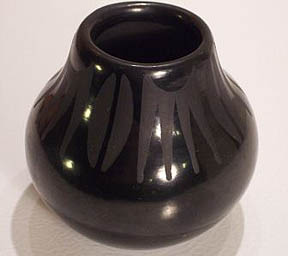Friday, September 28, 2012
Where Am I Today?
My pinch pot turned out pretty much how I wanted it, although it took a lot of whacking with the paddle and smoothing with a rib tool. If i could do it again, I would make the handles a bit thicker, because although they're small enough that they don't overpower the piece, they are so thin that one broke and I will be forever afraid of touching it.
Friday, September 14, 2012
Pinch Pot: Vase
 To join the two halves of our pinch pots together, we had to slip and score them, meaning we lacerated the clay on the two surfaces we wanted to attach and put on slippery liquid clay. If it weren't scored and slipped, the smooth surfaces would hardly be attached at all. The choppy surfaces with the slip in between become one. Achieving symmetry on my piece was difficult, especially since my two halves weren't exactly the same size, and the opening at the top was too small for me to stick my hand in and support the clay while I molded it. When I had the halves the same thickness, they weren't a uniform height all around, so I cut them level. Once joined, I had to hit the clay with a wooden paddle while rotating it to equalize the sizes. I also applied equal, hard pressure on the sides using a rib tool to get rid of the pinching bumps. For the handles, I tried to make them the same thickness when I pulled them and score the places for attachment at the same heights on either side. I used a piece of clay under the top attachment of one handle to keep it from sagging. I still haven't decided how I want to glaze the piece, and I also don't know if some of the glazes have to be fired at different temperatures and therefore can't be used on the same piece like some I've used in the past. In the next few weeks I hope to get this piece finished and glazed and start on my coil piece. Unfortunately, one of my very thin handles just broke, but I'm excited to learn methods of re-joining dried clay, which I've never done before
To join the two halves of our pinch pots together, we had to slip and score them, meaning we lacerated the clay on the two surfaces we wanted to attach and put on slippery liquid clay. If it weren't scored and slipped, the smooth surfaces would hardly be attached at all. The choppy surfaces with the slip in between become one. Achieving symmetry on my piece was difficult, especially since my two halves weren't exactly the same size, and the opening at the top was too small for me to stick my hand in and support the clay while I molded it. When I had the halves the same thickness, they weren't a uniform height all around, so I cut them level. Once joined, I had to hit the clay with a wooden paddle while rotating it to equalize the sizes. I also applied equal, hard pressure on the sides using a rib tool to get rid of the pinching bumps. For the handles, I tried to make them the same thickness when I pulled them and score the places for attachment at the same heights on either side. I used a piece of clay under the top attachment of one handle to keep it from sagging. I still haven't decided how I want to glaze the piece, and I also don't know if some of the glazes have to be fired at different temperatures and therefore can't be used on the same piece like some I've used in the past. In the next few weeks I hope to get this piece finished and glazed and start on my coil piece. Unfortunately, one of my very thin handles just broke, but I'm excited to learn methods of re-joining dried clay, which I've never done before
Maria Martinez
A ceramics artist who inspires me is Maria Martinez. Having died in 1980, she was one of the last remaining Pueblo Indians of the Black Mesa region of New Mexico. She gives a rare glimpse into the ancient Native American methods of pottery making. From a long line of tradition, she has a fine-tuned perception of how to mix, form, and fire clay. She uses blue sand and red clay, both from the desert environment (making sure to thank the Great Spirit for its use). She knows just how much water to add and how to knead the clay to that it is neither too crumbly nor too sloppy. She forms her pottery in the pinch-pot style, turning it on a broken dish called a pokey. Then, an intricately stoked fire surrounded by metal sheets and doused with dried cow manure bakes the clay at a very hot temperature without the use of an inclosed kiln and gives it a shining black finish. She is my favorite ceramics artist because she carries on an rich Native American pottery tradition that has been partially lost by time, and her pottery is so beautiful that it is widely renowned in modern times.
Monday, September 3, 2012
Lily Romando
When asked to choose an inspiring artist, the first person I thought of was my friend Lily. She was a photographer, and though her life and talent were cut short, her creativity in everything from life to art is inspiring. I hope to honor her not just with the quality of my craftsmanship, but also with the originality of my designs.
Subscribe to:
Comments (Atom)




